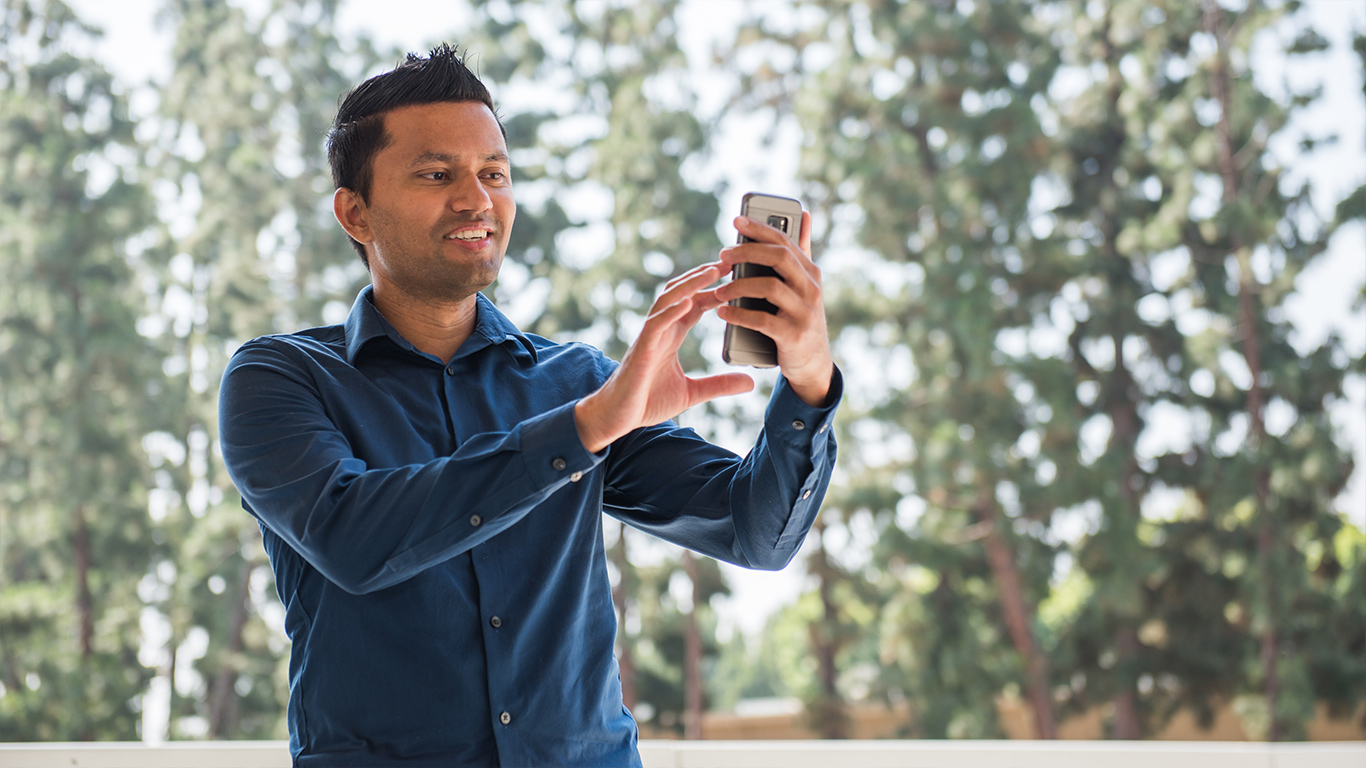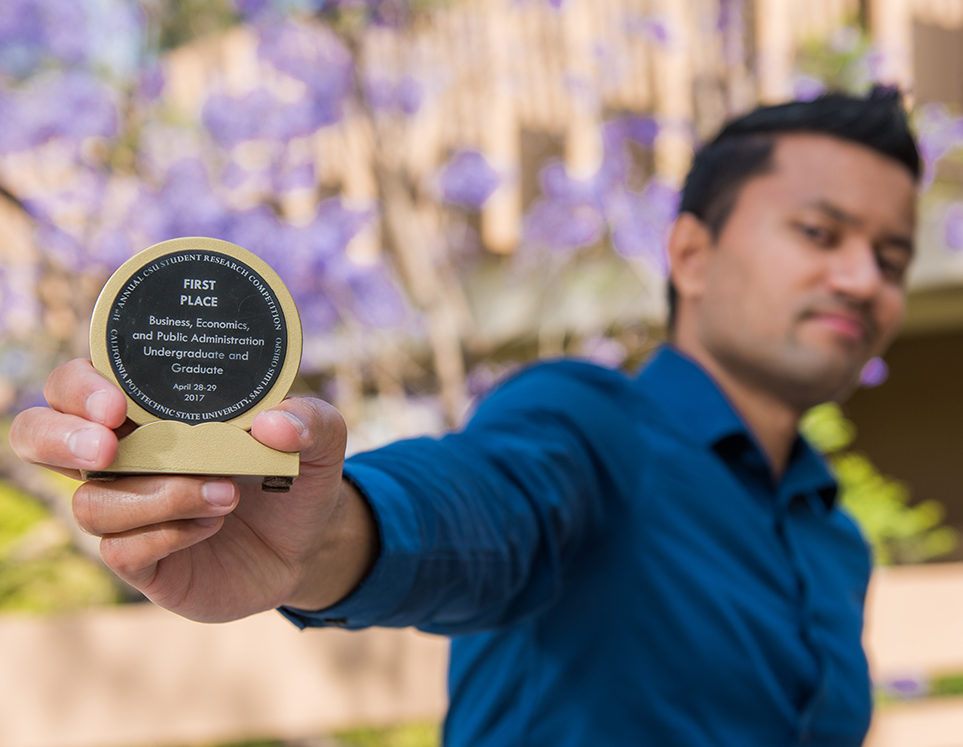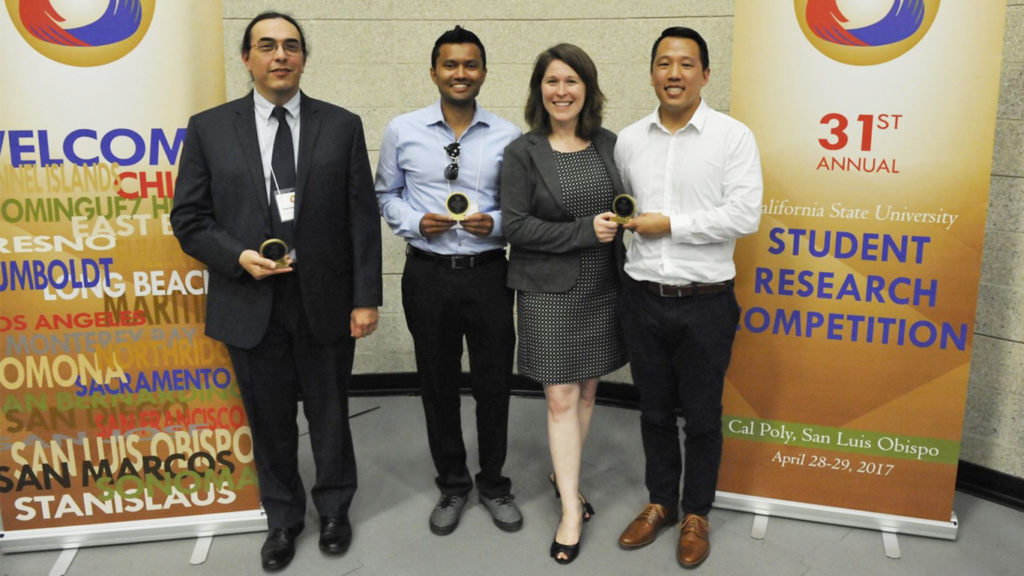
For Dhanushka Kumarasinghe, winning 1st place at the 31st Annual CSU Student Research Competition at Cal Poly San Luis Obispo (SLO) in late April 2017 was “surreal,” in part because he almost didn’t present at California State University, Dominguez Hills’ (CSUDH) 12th Annual Student Research Day in February, where he needed to win to compete at SLO.
Two days before Kumarasinghe was to give his talk, “Come Catch Pokémon at the Celadon City Department Store!: Player Perceptions Toward Businesses Within Pokémon Go Hotspots,” at the university’s research day, his father had a stroke and he rushed him to the hospital.
“There was a lot on my mind. I thought, ‘I have no time for this. There is no way I can still present,’” said the Lawndale resident who graduated in May from CSUDH with his bachelor’s degree in communications. “But my parents said, ‘You’ve got to do this thing.’ My dad specifically said he didn’t want to be the one holding me back from my presentation. So I left the hospital and presented it, then went back to the hospital. I didn’t even stay for the awards ceremony–I didn’t think I had a chance. I can’t believe I won 1st place.”
So I left the hospital and presented it, then went back to the hospital. I didn’t even stay for the awards ceremony. – Dhanushka Kumarasinghe
But he did take top honors, as a business, economics and public administration session winner, and his presentation was among the 10 selected to represent CSUDH at the statewide competition, which includes students from all 23 CSU campuses presenting their research.

Pokémon Go to the Winner’s Circle
Kumarasinghe credits the uniqueness and timeliness of his research topic–the Pokémon Go phenomena.. He got the idea for his research in July 2016 when Pokémon Go was at its peak and business owners began making their stores Pokémon “hot spots” in the app–hot spots attract Pokémon characters– to entice potential shoppers.
“I was walking by an antique store and they were using Pokémon Go to get people to come in. I thought to myself, ‘Something about this seems very wrong.’ It just didn’t seem like the people who played Pokémon Go would be interested in an antique store.”
Kumarasinghe conducted his research with an online survey that attracted 1,454 participants from 21 countries. His survey was designed to gather the behavioral intentions toward certain types of business industries–food, parking services, tourism, and others–and toward various types of promotions, such as discounts, free parking, and enticement with themed products.
Taking 2nd place at the 31st Annual CSU Student Research Competition were CSUDH students Lawrence Ramirez for his presentation, “Significant Possessions: Altered States of Consciousness in Yoruba Masquerades;” and Kevin Sun, Lauren Santiago, and Daniella Tarankow for “Living with Crohn’s Disease: A Phenomenological Study.”
Overall, Kumarasinghe’s research found that businesses and promotions that offered incentives and created benefits to playing Pokémon Go were preferred.
“Some of the promotions businesses used were in-game promotions, where they awarded items within the game for completing tasks. The players were drawn to those kinds of promotions,” he said. “Promotions where they received say, a Frappuccino, didn’t really benefit them playing the game, so they were not as drawn to that.”
Now a CSUDH alumnus, Kumarasinghe plans to look for work in advertising and marketing, to develop broadcast content for CSUDH’s Internet radio station KDHR, and apply for graduate school. In the meantime, he has added his two 1st place honors to his resume, and hopes to work with his SRD faculty mentor Keunyeong (Karina) Kim, assistant professor of communications, to publish it or present it at conferences.
“My professor was invaluable during my research. Dr. Kim helped quite a bit, especially since I don’t know statistics too well,” he said. “She helped me run statistics, and the different types of stats involved in that kind of research. She also helped me frame what I was trying to study. She was amazing.”
